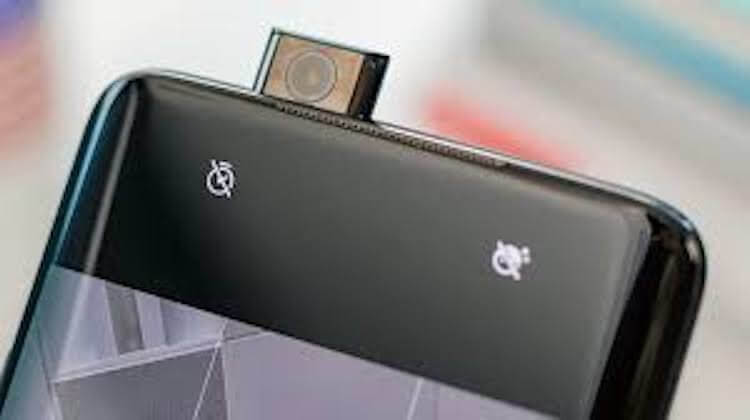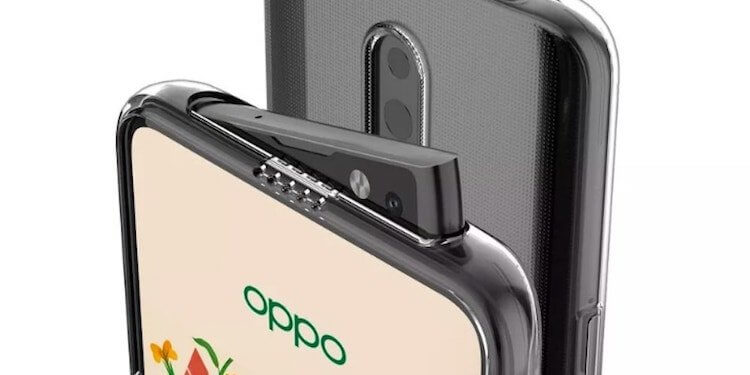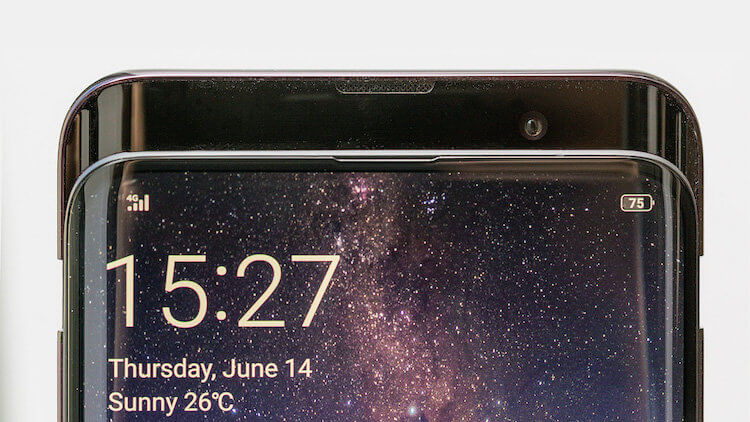It just so happened that last year I believed that the outbound camera was the future of smartphones. I believed in this technology and I wanted to use such smartphones. Now I am ready to admit that I was wrong. I still want to use them, but given the new circumstances, I am ready to abandon such devices. At the same time, it seems to me that the manufacturers also had to change their minds very quickly. This is especially noticeable with the example of OnePlus and OPPO. The latter were generally the ideological inspirers of cameras with a motor. But what has changed and why did everyone change their minds, including me?

Now this is already a rarity.
The first smartphone with a pivoting camera
The first smartphone with an outgoing camera was the VIVO Nex A, which surprised many with its release. Of course, with the exception of those who were fueled by rumors about the imminent release of such a smartphone and were just waiting for it.
Some time before that, sliders appeared that opened by hand, and a motorized OPPO FIND X. The latter was more of a concept that cost just immensely and did not interest anyone. Later there was also OPPO Reno, in which the company took an alternative approach. The camera came out of the body, but in the form of a swing element.

This is how OPPO Reno looked before and it was interesting.
I liked this state of affairs and I believed that those who do not need a front camera will get a frameless screen, and selfie lovers will get a reliable (according to the manufacturers' assurances) mechanism for a sliding camera. Most of all, I was glad that I abandoned the terrible hole in the screen, which, as it seemed to me, spoiled the whole experience of the smartphone. I didn't want to use such smartphones at all.
The main inspirers of mechanized cameras were the companies of the BBK group – OPPO, VIVO, OnePlus. There was another option from Huawei, but it somehow passed unnoticed. Now the idea is bent and all its followers have stopped releasing models with a moving camera.
Impact of driving cameras on fifth generation networks
We suspected something wrong a long time ago, but the release of OPPO FIND X 2 and OPPO Reno 3 became the final confirmation of the manufacturers' refusal to use outgoing cameras. The rulers that had outgoing cameras lost them. As they say, R.I.P.
The reason for this refusal is obscenely simple. In modern 5G – smartphones, a processor with an additional modem must be installed, which takes up space. The outgoing camera also took place. Now it has been removed and the free space in smartphones should be enough not only to accommodate this modem, but also to install a more capacious battery. It will come in very handy, as smartphones will consume more energy when working in fifth generation networks. At least at first.

It seems that the camera does not take up much space, but it does.
For fifth-generation networks to evolve, manufacturers must offer smartphones that support this technology. The more there are, the more actively operators will begin to modernize their networks. All equipment has existed for a long time, the only question is the expediency of modernization (read costs) for telecom operators.
Reliability of smartphones with a camera roll out
The second reason is the reliability of the exit chamber design. No matter how sweetly they sang to us that the mechanism was tested for 300,000 work cycles, it is still hard to believe that it proved to be very reliable. If there were no problems with him, the manufacturers would not have drawn their tails and would not stop releasing “revolutionary” smartphones. Even if some left, the rest would still remain.
Most of the questions regarding reliability I had not with the motor itself, but with the cable that connects the camera to the processor and the board. It is too thin and can be damaged easily. The manufacturers do not cover this topic, but there is a feeling that there have been many complaints about this mechanism. As a result, this became another reason for them to abandon the problem node.
In the end, as required to prove. The most reliable is the classic candy bar with no moving parts. Although, might be worth looking at foldable smartphones?
Is a foldable smartphone convenient
Since everything goes in the direction of increasing the usable area of the screen and adjusting it to the correct shape without cutouts and “holes”, the emergence of folding smartphones could be a panacea. Especially such as Samsung Galaxy Z Flip and Motorola Razr 2020. But even here it did not grow together. Manufacturers consistently continue to screw up left and right. One fold on the screen is worth it. While the technology is raw and there is no need to talk about its imminent mass distribution.
It turns out, we can say that a folding smartphone may be convenient, but it will definitely not soon be loved by the mass public. So far there are more minuses than pluses. However, I have already talked about those and others.

Someone else wants this OPPO Find X. I think not already.
On folding smartphones, my opinion was formed a long time ago. It lies in the fact that their time will come and they will really become promising. Especially after they get cheaper. The spokesperson Huawei even named when this would happen.
I’m ready to admit that I was wrong on smartphones with a camera going out. The technology is doomed and, most likely, we will not see anything like it again. At least in droves. I don't know how you feel about this, but I am sorry to lose a completely frameless screen.
Maybe the manufacturers know more than we do and are preparing for the release of smartphones with a camera under the screen? This cannot be ruled out, especially according to the stories of colleagues, they have already been able to look at a working prototype at the factory of one of the vendors.
What do you think about this? Are you sorry to bury the idea of moving cameras? And what do you think about the reason for rejecting them? Is it freeing up space for 5G or just a fakap with reliability? Write in the comments and in our Telegram chat.
